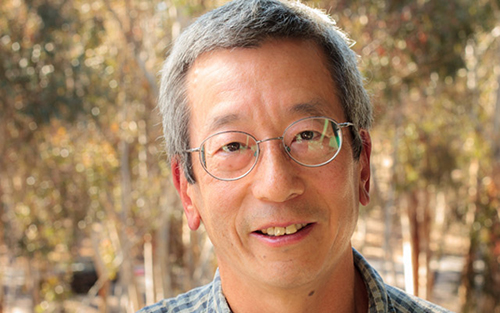![Nobel Laureate Roger Tsien, Ph.D.[UCSD]](https://genengnews.com/wp-content/uploads/2018/08/Sep1_2016_UCSD_RogerTsien1971372814-1.jpg)
Nobel Laureate Roger Tsien, Ph.D.[UCSD]
Roger Tsien, Ph.D., co-winner of the 2008 Nobel Prize in chemistry and professor of pharmacology, chemistry and biochemistry at the University of California San Diego School of Medicine for 27 years, died August 24 in Eugene, OR. He was 64.
Dr. Tsien’s work literally illuminated science. With Osamu Shimomura, Ph.D., an emeritus professor at the Marine Biological Laboratory in Woods Hole, MA, and Martin Chalfie, Ph.D., a professor of biological sciences at Columbia University, Dr. Tsien helped scientists peer within living cells and organisms as never before, earning not just the 2008 Nobel Prize but scores of subsequent awards and accolades.
“Every honor was justly deserved, and always received with humility,” said Pradeep Khosla, chancellor of UC San Diego. “Roger was an extraordinary man: kind, generous, gracious, and always the consummate scientist pushing the limits of his work to expand the possibilities of science. He was a rare talent we cannot replace.”
Drs. Tsien, Shimomura, and Chalfie collaborated to discover and develop green fluorescent protein (GFP), derived from the jellyfish Aequorea victoria, as a new and soon-indispensable research tool. Dr. Shimomura identified the crucial jellyfish protein and revealed that it glowed bright green under ultraviolet light. Dr. Chalfie showed how it could be used as a biological marker. Combining his deep skills in chemistry and biology, Dr. Tsien found ways to make GFP glow more brightly and consistently; then he created a full palette of fluorescent proteins that scientists could use to track different cellular processes at the same time.
“I’ve always been attracted to colors,” Dr. Tsien told the San Diego Union-Tribune in 2008. “Color helps make the work more interesting and endurable. It helps when things aren’t going well. If I had been born color-blind, I probably never would have gone into this.”
GFPs have become a fundamental fixture in life sciences labs around the world, allowing researchers to look into cells or whole animals, to watch molecules interact in real-time and ask questions once thought impossible.
Dr. Tsien, who went on to work with colleagues like Quyen T. Nguyen, M.D., Ph.D., research collaborator and head and neck surgeon at UC San Diego Health, helped develop experimental injectable fluorescent peptides that cause hard-to-see peripheral nerves to glow, allowing surgeons to avoid them when removing damaged or cancerous tissues.
“The analogy I use is that when construction workers are excavating, they need a map showing where the existing underground cables are actually buried, not just old plans of questionable accuracy,” he said. “Likewise when surgeons are taking out tumors, they need a live map showing where the nerves are actually located, not just a static diagram of where they usually lie in the average patient.”



